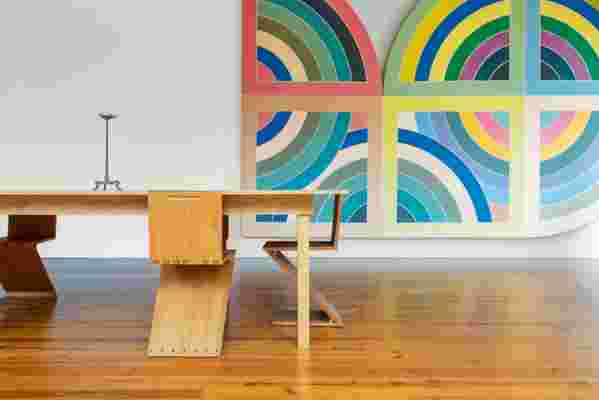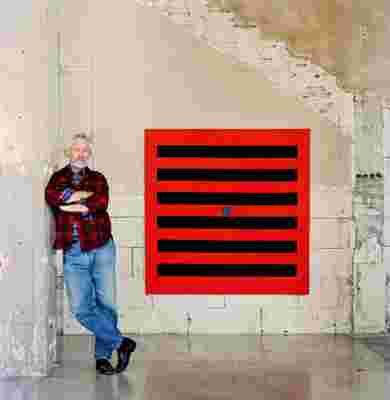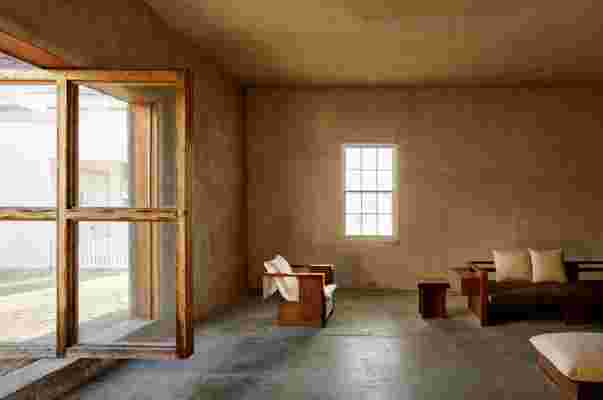For artist Donald Judd, a house was not just a place to live, and a studio was not just a place to work—the spaces themselves are very much a part of his oeuvre. Having very deliberately installed his art and furniture in his residences and studios in New York and Texas, Judd stipulated in his will that he wanted the spaces preserved exactly how he had left them, a task given to the Judd Foundation, which restored them after his death in 1994 and opened them to the public as museums. But for those who can’t visit the sites in person, there’s a new way to take a peek inside them: a new book, Donald Judd Spaces ( $75, Prestel ) . Across its 400 pages are both archival and newly commissioned photographs of his many spaces, plus a few of Judd’s personal essays. We spoke with the artist’s daughter, Rainer Judd, president of Judd Foundation, about the creation of the book.

The third floor of 101 Spring Street in New York.
Architectural Digest: How did the idea for Donald Judd Spaces come about?
Rainer Judd: We have been thinking of a book like this for quite some time—our first book was the reprint of Don’s “yellow book” from 1975, which is a collection of his art criticism and his writing. This was followed by Donald Judd Writings and Donald Judd Interviews . Naturally, Donald Judd Spaces was a book that was needed! Through our work as an artist foundation with a large physical presence, we are in the unique place of figuring out how to best communicate the ideas contained within the spaces. There is a certain familiarity with Don’s art and how that relates to space, but really, he was thinking of space related to architecture, furniture, the natural world, and beyond.

Donald Judd with untitled (1961) in his architecture studio in Marfa, Texas, in 1993.
AD : What was the process of selecting archival photographs and pairing them with newly commissioned ones?
RJ: It was great fun to search through our archives, with an eye to sharing a photographic record of Don and his spaces. Finding the photographs he took with his Hasselblad was really special—we chose to include two pairs. We made a choice with our designer to set the photographs, both archival and newly commissioned, together and it created this beautiful narrative of the spaces over time. The first image in the book is from 1970 and the last from 1993. It is presented as everything at once, the spaces as they were in use, and the spaces with Don.
The previously unpublished images were both from our archives and through research with people, friends of Don’s, who had been in the spaces. Each image is the experience of being in his spaces, which are so thoughtful. There are more than 35 photographers who are part of this book and we are honored to have them share their work.

The Judd Foundation’s Whyte Building in Marfa.
AD: How did you choose which essays to include?
RJ: The essays and film interview excerpt were selected as Don’s voice. He wrote extensively, as seen in Donald Judd Writings , so there exists a very clear record of his intentions with his spaces in New York and Texas. Two of the essays are specifically on spaces, 101 Spring Street and La Mansana; two are on the broader sections of Marfa, Texas, and Ayala de Chinati; and one is on the ideas of Judd Foundation. It was important for this book to provide readers with the clear sense that these are his spaces and his ideas. Judd Foundation exists today because he had the foresight to describe what the value was in these spaces. He was very attuned to the spatial experience of a room, down to the very placement of a doorway.
AD: How do you hope this book will impact readers? What do you hope they'll learn from it?
The ultimate resource for design industry professionals, brought to you by the editors of Architectural Digest
RJ: This book is one of the publications we produce as an organization that are intended to serve as tools for audiences interested in knowing more about Don’s work and thinking, and there are several more we will publish on his architecture, furniture, and art. We hope readers will view Don’s artwork from a different place and think of space in a new light. The photographs show the space located within an object but also space way, way out.
The south room in the east building of La Mansana de Chinati/The Block in Marfa.
The winter bedroom in La Mansana de Chinati/The Block.
The Judd Foundation architecture office in Marfa.
Casa Morales, about 60 miles from Marfa.
The kitchen of Casa Morales.
Donald Judd Spaces (Judd Foundation/Prestel Publishing and DelMonico Books, 2020).
